These solar eclipse 2024 photos from our readers are absolutely amazing (images, video)
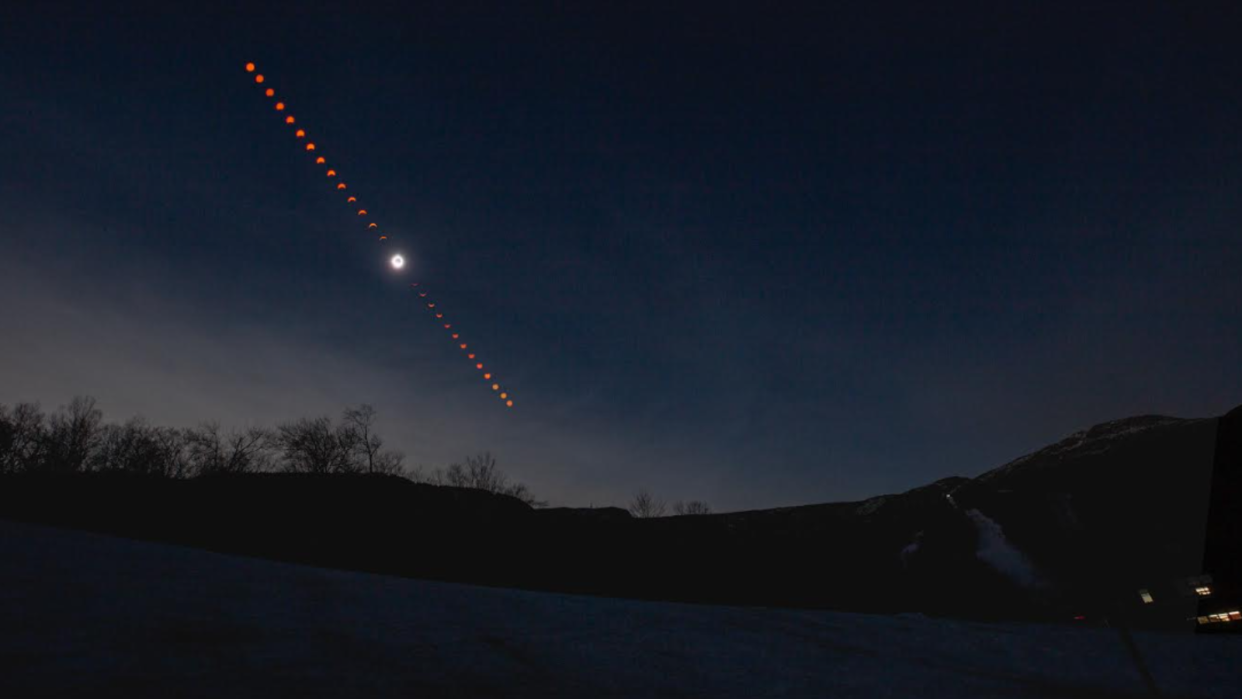
On Monday, April 8, a total solar eclipse swept through the skies over North America, delighting and astounding millions of onlookers who had traveled from across the globe to take in this incredible event. And our own space readers got in on the act, too.
The sun was completely obscured by the moon across what is known as the "path of totality," which was approximately 115 miles (185 kilometers) wide and 10,000 miles long (16,000 kilometers).
This 2024 total solar eclipse path crossed the four Mexican states of Sinaloa, Nayarit, Durango, and Coahuila before passing over 15 U.S. states, Texas, Oklahoma, Arkansas, Missouri, Illinois, Kentucky, Tennessee, Michigan, Indiana, Ohio, Pennsylvania, New York, Vermont, New Hampshire, and Maine.
The path of totality then moved through Canada, with the total eclipse seen in seven Canadian Provinces of Ontario, Quebec, New Brunswick, Prince Edward Island, Nova Scotia, and Newfoundland.
Related: When is the next solar eclipse?
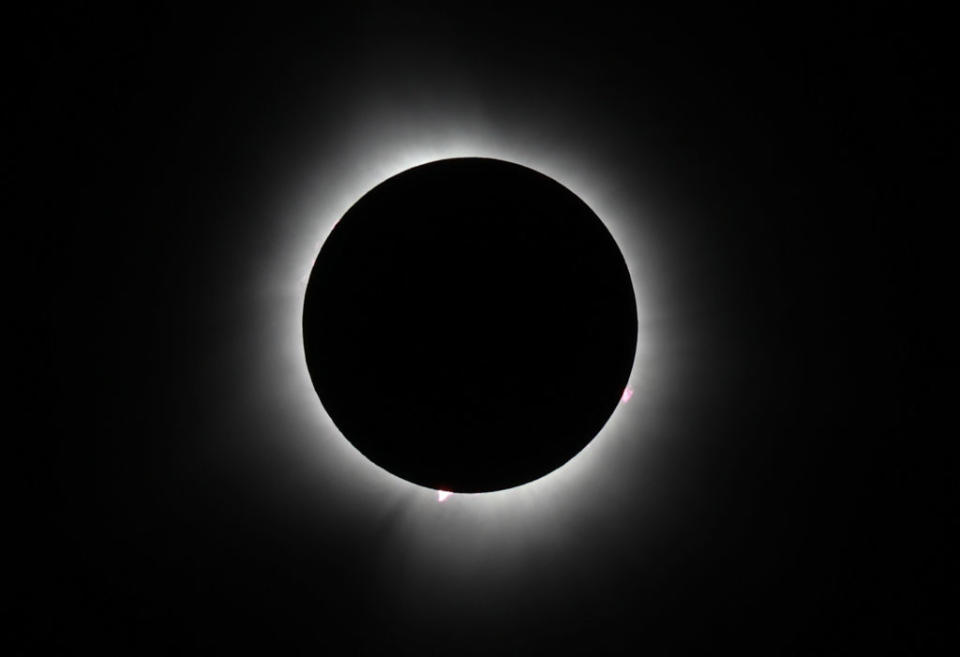
NASA estimated that 31.6 million people live in the totality path in the U.S. alone. With so many people on the path of the eclipse, and many more traveling to join them, it is unsurprising that there are a plethora of astounding images of the most striking astronomical event of 2024.
Space.com reader Rajat Kumar Pal captured an incredible composite image of the total solar eclipse from Stow, Vermont.

"In this image, a lot of things are going on: first, obviously the eclipse itself, second almost 40 % of cloud cover, making it difficult to get a clear picture of the solar disc as well as the corona. and other features; and third, a constant for fiddling around with the exposure as clouds interfering with the intensity of light from the eclipsed sun!" he wrote. "Above all, it was an amazing experience to watch it with my wife, Sudakshina, who experienced this after a long time (her last eclipse experience was when she was a kid, and she forgot most of it).
"It was a beautiful and surreal experience, and experiencing it with my wife is something special!"
Totality awesome!
The first region to experience totality during the total solar eclipse was Mazatlan, Mexico, where the moon completely covered the sun at around 11:10 local time (14:10 EDT/18:10 GMT).
One region in the U.S. where the eclipse reached totality on April 8 was Indianapolis, Indiana. Onlookers who gathered at the Indianapolis Motor Speedway caught a glimpse of a flash of light as the last sunlight streamed past the moon just before the totality, a phenomenon also known as a "diamond ring."
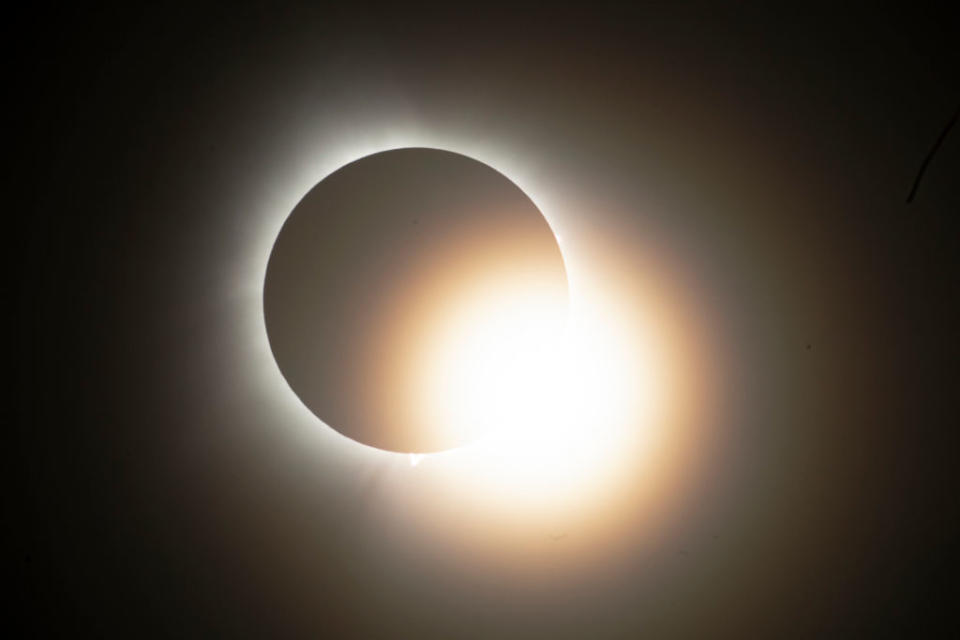
The total eclipse of the sun reveals aspects of the sun that are usually obscured. This includes layers of the sun's atmosphere. The corona, the outer solar atmosphere, and the chromosphere, the sun's inner atmosphere.
This image was captured from Bloomington, Indiana, and shows a pink layer around the dark disk of the moon, which is the chromosphere.
Related: The solar eclipse is over! Here's what to do with your eclipse glasses
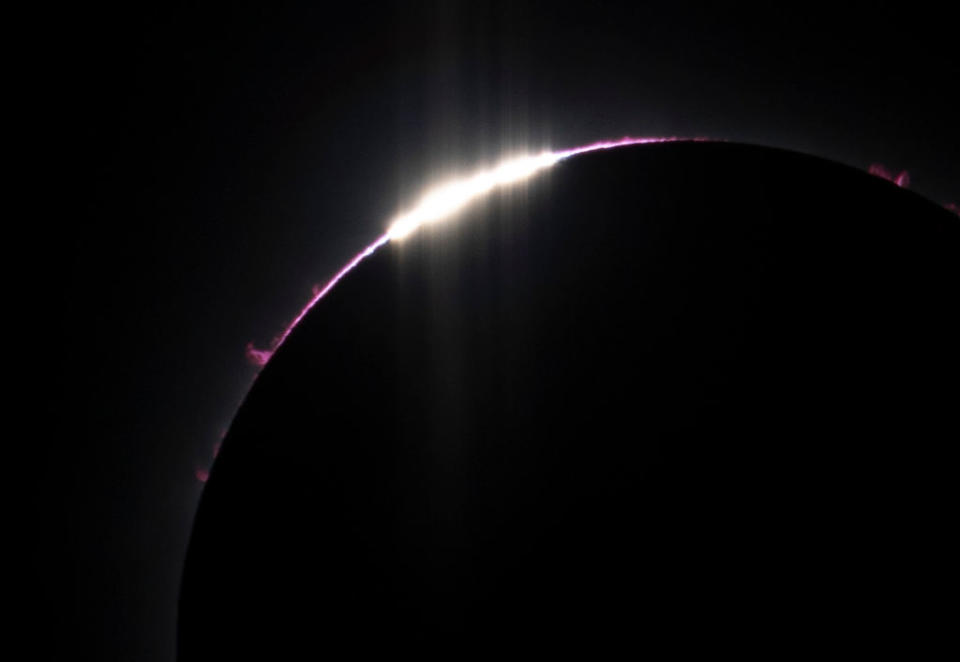
Not to be left out, the corona also made several special appearances during the total solar eclipse, unobscured by photons from the photosphere. This image captured from Russellville, Arkansas, on April 8, shows the corona as white "streamers" extending out from the dark lunar disk.
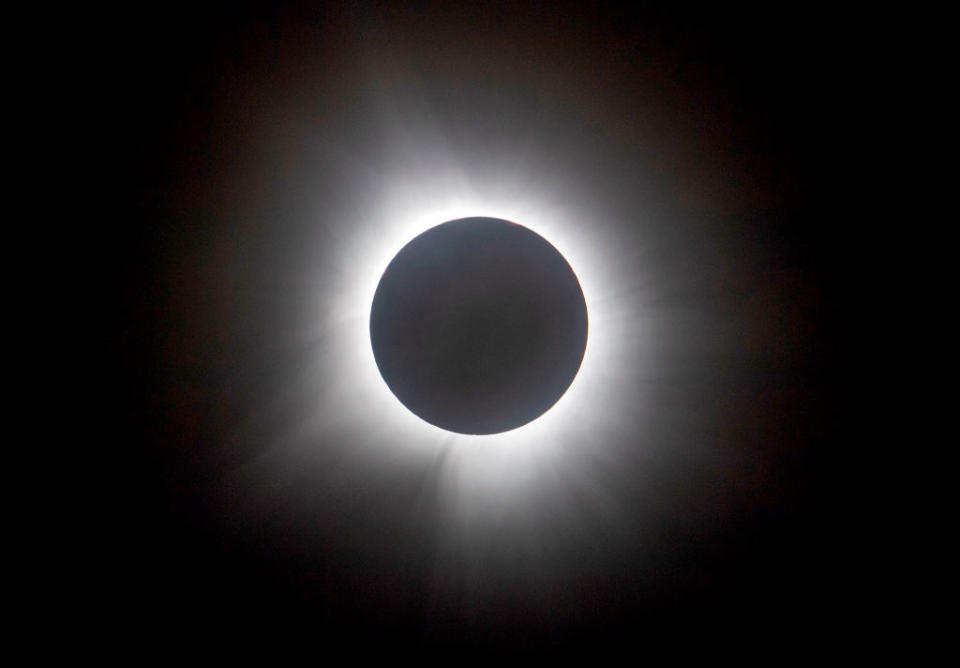
Space.com reader Silvia Lobo was also able to capture an incredible view of the corona, with hints of the chromosphere at the bottom of the lunar disk from Saranac Lake, New York.
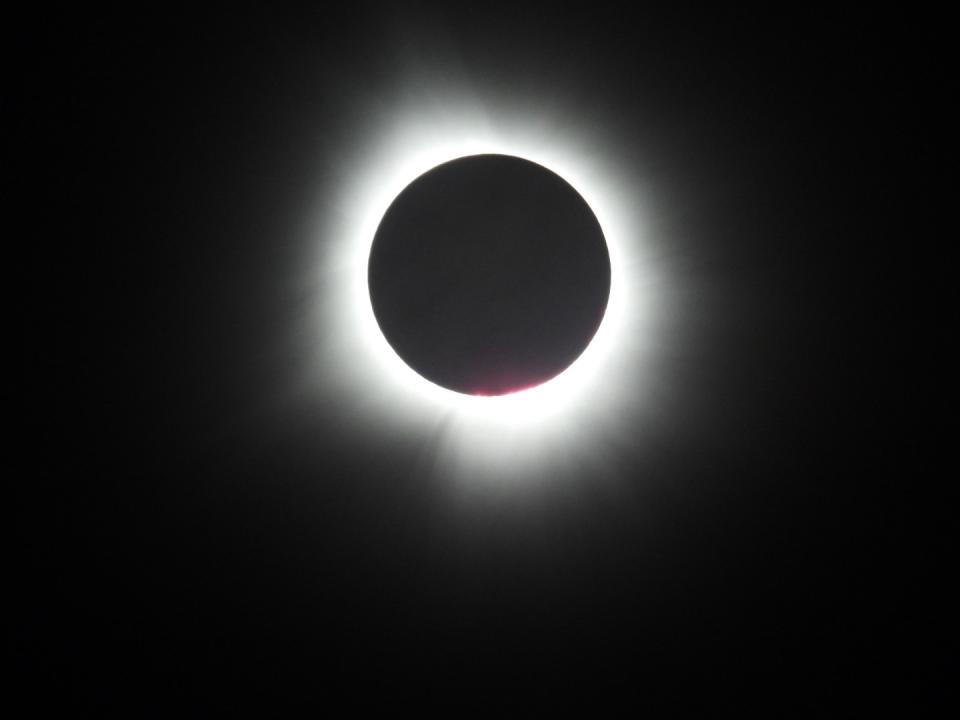
Space.com reader Jackman Maine caught an image of the totality over a rural landscape.
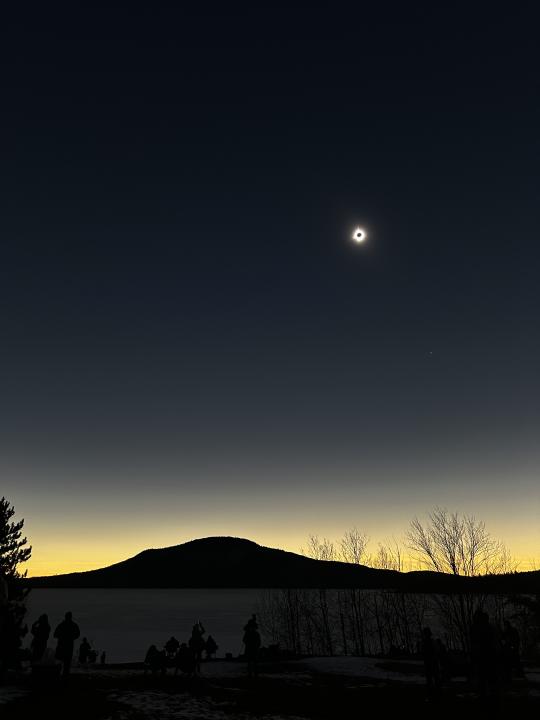
The solar eclipse looks particularly fierce in a "miracle" image taken from Kimball Bend Park in Central Texas by Space.com reader Justin Maune. They said, "I just took this photo a few hours ago. I traveled 30 hours from So Cal to Texas to see this.
"The clouds were looking terrible. Overcast. And then it cleared. Like a miracle, 10 minutes before totality, the sky was clear, and I was able to snap this pic."
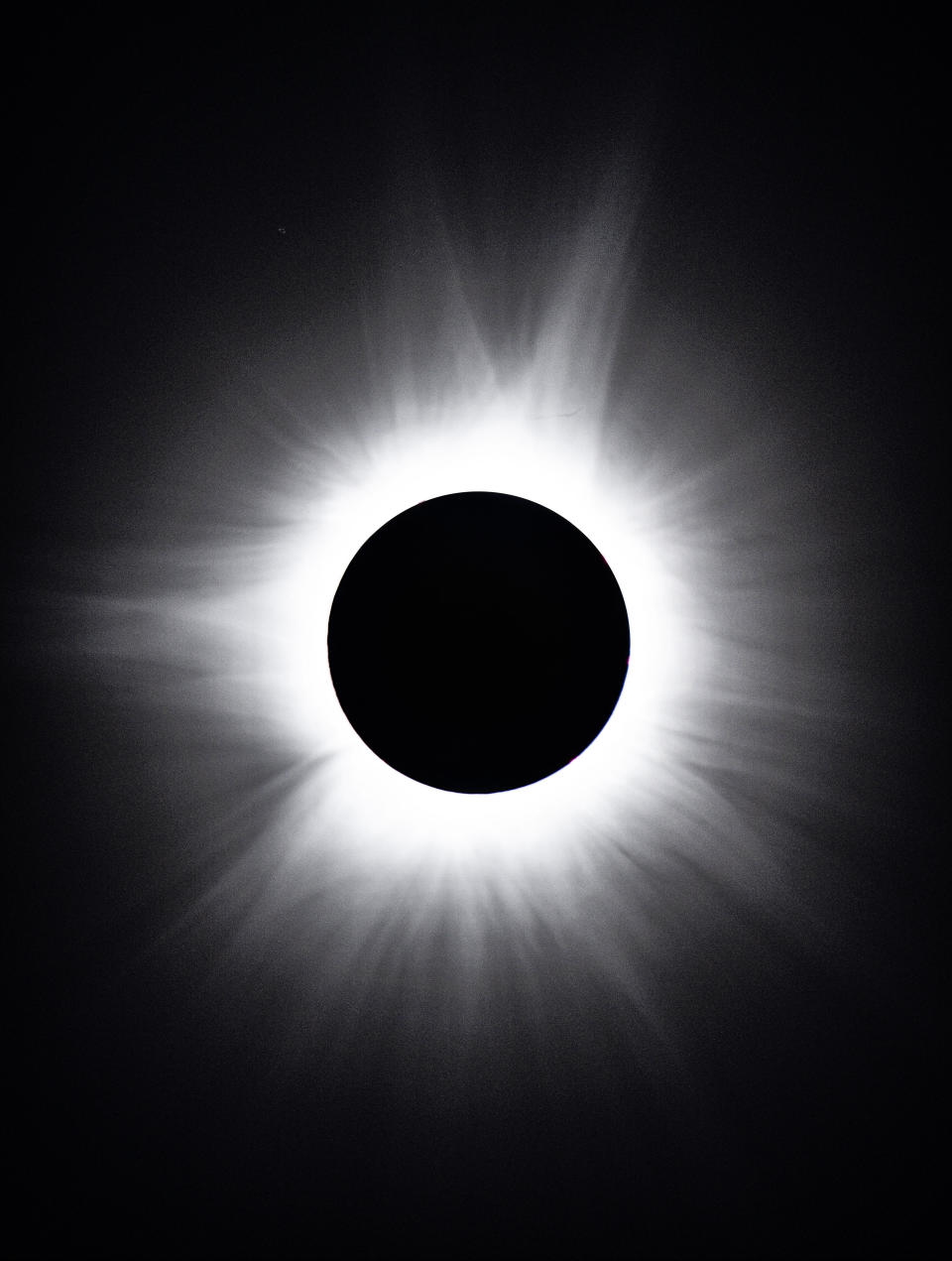
Diamond rings and other eclipse things
Space.com reader Kim DeCew described the eclipse as "an incredible experience" and caught some incredible images from Hico, Texas, including the diamond ring picture below, to prove it.

The diamond ring effect around the lunar disk wasn't the only diamond on display during the eclipse; some literal stones were also on show. The jubilation felt during this astronomical event was elevated in Tiffin, Ohio, during the "elope at the Eclipse" event when over 100 couples tied the knot during the totality.
Congratulations to the couples wedded at the event, but if their wedding song wasn't "Total Eclipse of the Heart" by Bonnie Tyler and Jim Steinman, it's a real missed opportunity!
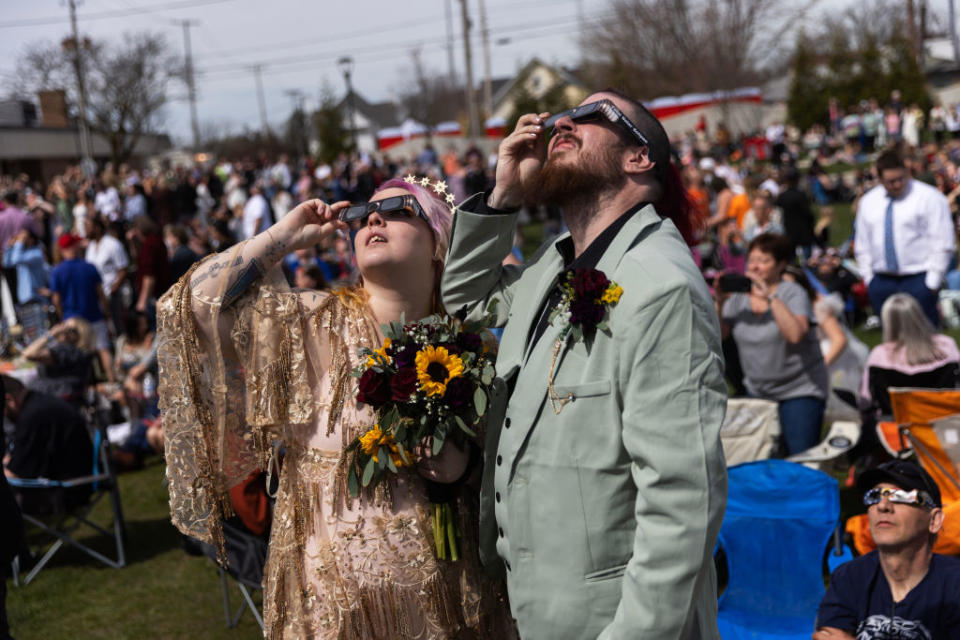
A phenomenon associated with the diamond ring (the eclipse variety that is) are Bailey's Beads, droplets of light that represent sunlight streaming through the valleys, craters, mountains and rough terrain of the moon.
Space.com reader Sudakshina Chakrabarty captured an impressive image of Bailey's Beads from Stowe, Vermont.
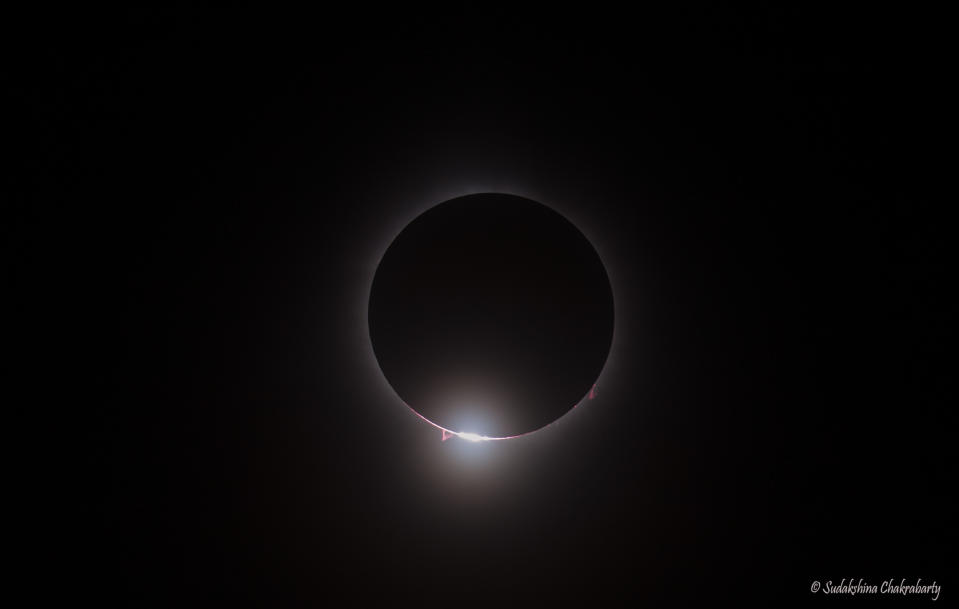
Outside the path of totality, skywatchers caught many fascinating images of the partial solar eclipse these regions experienced. One striking example was this image taken in New York.
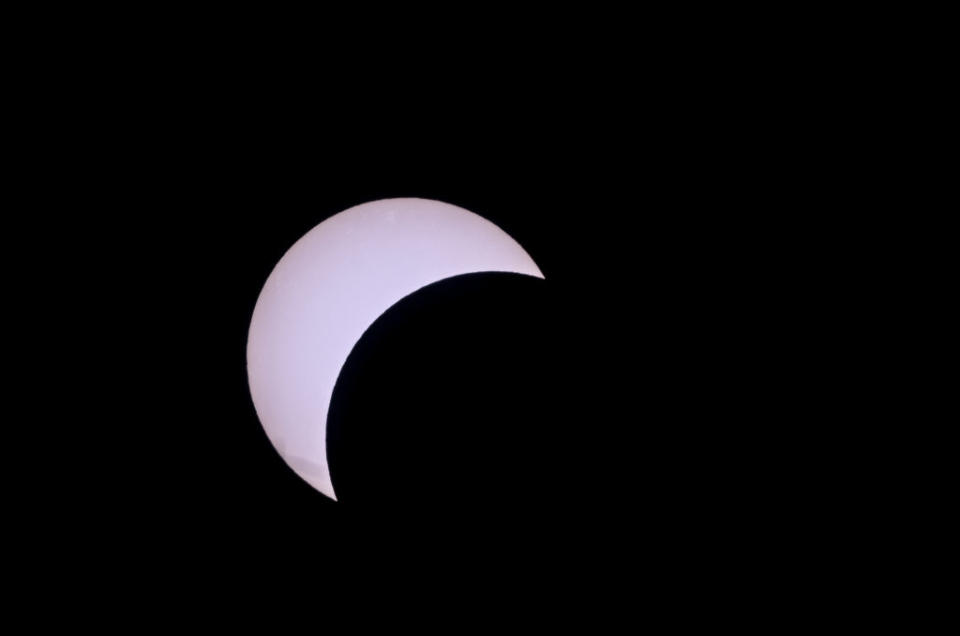
X user and Architectural Photographer Alex Farmer captured incredible time-lapse footage that showed the skies darkening over Cleveland, Ohio.
The solar eclipse brought out many amateur photographers taking images with nothing more than a cell phone, arguably demonstrating how advanced cell phone cameras have become.
On such eclipse watched was the son of x user leftbob, who caught some fantastic images with their phone.
"I completely underestimated how cool it would be to see the eclipse in totality. The strange hue of color as it got darker, how cold it got, and the brilliance of the corona when it appeared," Leftbob wrote. "It was amazing. My son took these pics with his phone!"
The eclipse from the air and beyond!
Answering the question "what does the eclipse look like from an airplane" passengers departed Dallas Fort Worth International Airport on the Delta Airlines flight from Dallas to Detroit glimpsing the eclipse through airplane windows.
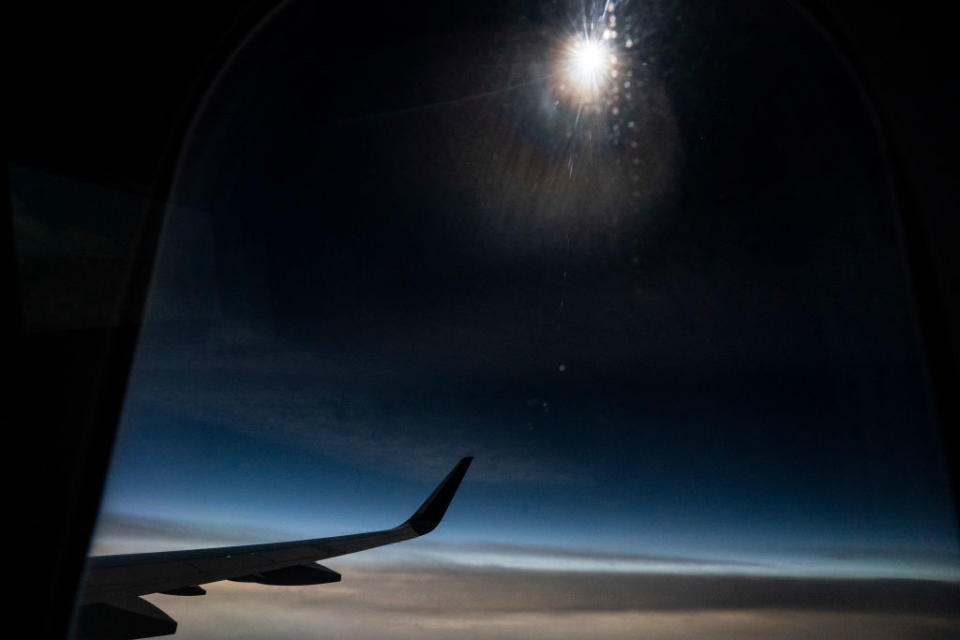
Rather than taking a location-based approach, the European Space Agency (ESA) went a little higher even, imaging the eclipse with its Geostationary Operational Environmental Satellite (GOES-16). GOES-16 captured stunning timelapse footage of the shadow of the moon gliding over the surface of Earth, showing this event from a cosmic perspective.
The ESA shared the footage on its ESA Earth Observation X feed writing: "Blink and you'll miss it... These images by the Geostationary Operational Environmental Satellite (GOES-16) captured the moon's shadow cast on Earth's surface moving across North America from 16:00 to 23:00 CEST."
Also taking a more out-of-this-world approach to the total solar eclipse was the crew of the International Space Station (ISS). On its X feed, NASA shared video footage of the moon's shadow projected on Earth during the eclipse.
RELATED STORIES:
— Which places on Earth witness the most solar eclipses?
— How the supersonic Concorde jet broke the record for the longest total solar eclipse in history
— Historical incidents of viewing total eclipses near the edge of totality
If the above images have you eager to do your own spot of eclipse watching, the next solar eclipse is visible from Greenland, Iceland, the Atlantic Ocean, and Spain on Aug. 12, 2026.
Eclipse chasers not keen on traveling outside North America, will have longer to wait. The next total solar eclipse will happen on March 30, 2033, and will be seen in Alaska.
Following this, the U.S. states of Montana, South Dakota, and North Dakota, and areas of Canada will experience a total solar eclipse on Aug. 23, 2044. Then just under 12 months later, on Aug. 12, 2045, a total solar eclipse will be visible over California, Nevada, Utah, Colorado, New Mexico, Oklahoma, Kansas, Texas, Arkansas, Missouri, Mississippi, Louisiana, Alabama, Georgia, and Florida in the U.S. as well as in the skies of the Caribbean and South America.
Submit your story photos! If you capture a photo of the April 8 total solar eclipse or any of these strange effects and would like to share it with Space.com's readers, send photos, videos, comments, and your name, location and content usage permission release to [email protected].
